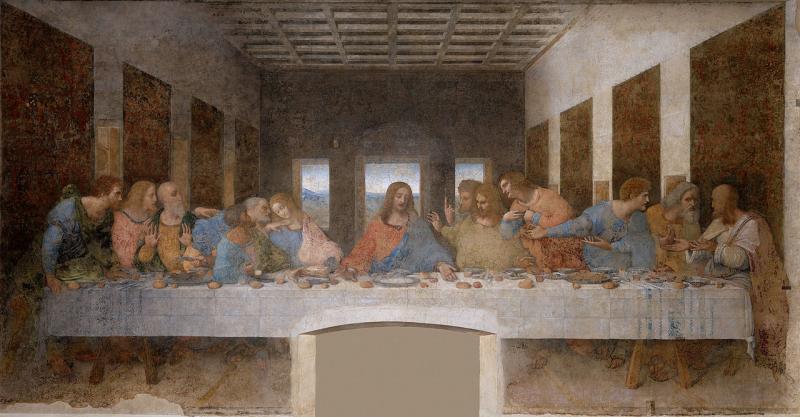UNESCO Sites of Italy: Church and Dominican Convent of Santa Maria delle Grazie
ITA:

Use player to listen to Italian version
Santa Maria delle Grazie is a church and Dominican convent in Milan. The refectory of the convent contains the world-famous mural of The Last Supper by Leonardo da Vinci, “whose work was to herald a new era in the history of art,” says Unesco.
The refectory is an integral part of the architectural complex of Santa Maria delle Grazie, completed at the end of the 15th century by Bramante under the rule of the Sforza. It has been a UNESCO World Heritage site since 1980.
Leonardo executed The Last Supper between 1495 and 1497. It is “undisputedly one of the world’s masterpieces of painting,” writes UNESCO, its value “inseparable from the architectural complex in which it was created.”
In the painting, Leonardo represented the moment immediately after Jesus said, “One of you will betray me.” Leonardo changed the classical interpretation of the composition, placing Jesus in the midst of the 12 Apostles, creating four groups of three figures on each side of him.
It is the most dramatic moment of the Supper, in which each apostle asks himself, and asks others, who could be the traitor. Leonardo focuses on the effect that Jesus' words have on the apostles, on their reaction, depicting their thoughts and emotions through their gestures and expressions. They are “magnificently captured” in a way that was never tried before.
The genius of the artist is also seen in the use of light and strong perspective.
Leonardo did not work in fresco, but in tempera on a two-layered surface that did not absorb paint. This way of working allowed the artist to obtain more refined chiaroscuro effects and to modify the work day after day based on how he saw fit; however, precisely for this reason, the painting is much more exposed to the damage of time. Indeed, as early as 1568, Vasari had already pointed out problems with this technique.
For this reason as well, various attempts to remove the painting from its original location without permanently damaging it have always failed.
Could Leonardo not have known that?
Santa Maria delle Grazie è una chiesa e un convento domenicano a Milano. Il refettorio del convento contiene il famoso affresco de L'Ultima Cena di Leonardo da Vinci, “la cui opera avrebbe dato una svolta alla storia dell'arte", scrive l’UNESCO.
Il refettorio è parte integrante del complesso architettonico di Santa Maria delle Grazie, completato alla fine del XV secolo dal Bramante durante il dominio degli Sforza. Il complesso è sito patrimonio mondiale UNESCO dal 1980.
Leonardo eseguì l'Ultima Cena tra il 1495 e il 1497. È “indiscutibilmente uno dei capolavori mondiali di pittura”, scrive l’UNESCO, il suo valore “inscindibile dal complesso architettonico in cui è stato creato”.
Nel dipinto, Leonardo rappresentò il momento immediatamente successivo a quando Gesù pronunciò queste parole: “Uno di voi mi tradirà”. Leonardo modificò l'interpretazione classica della composizione, collocando Gesù in mezzo ai 12 Apostoli, creando quattro gruppi di tre figure su ciascun lato.
È il momento più drammatico della Cena, in cui ogni apostolo si chiede e chiede agli altri, chi potrebbe essere il traditore. Leonardo si concentra sull'effetto che le parole di Gesù hanno sugli apostoli, sulla loro reazione, rappresentando i loro pensieri ed emozioni attraverso i loro gesti ed espressioni, “magnificamente catturati” in un modo mai tentato prima.
Il genio dell'artista si vede anche nell'uso della luce e della prospettiva.
Leonardo non lavorò usando la tecnica dell’affresco, bensì applicò, sul muro a secco, la tempera su un doppio strato di intonaco. Questo modo di lavorare gli permise di ottenere effetti chiaroscuri più raffinati e di modificare il lavoro giorno dopo giorno in base a successivi ripensamenti; tuttavia, proprio per questo motivo, il dipinto è molto più esposto ai danni del tempo. In effetti, già nel 1568, Vasari aveva segnalato problemi causati da questa tecnica.
Anche per questo motivo, vari tentativi di rimuovere il dipinto dalla sua collocazione originale senza danneggiarlo permanentemente sono sempre falliti.
Poteva Leonardo non saperlo?











